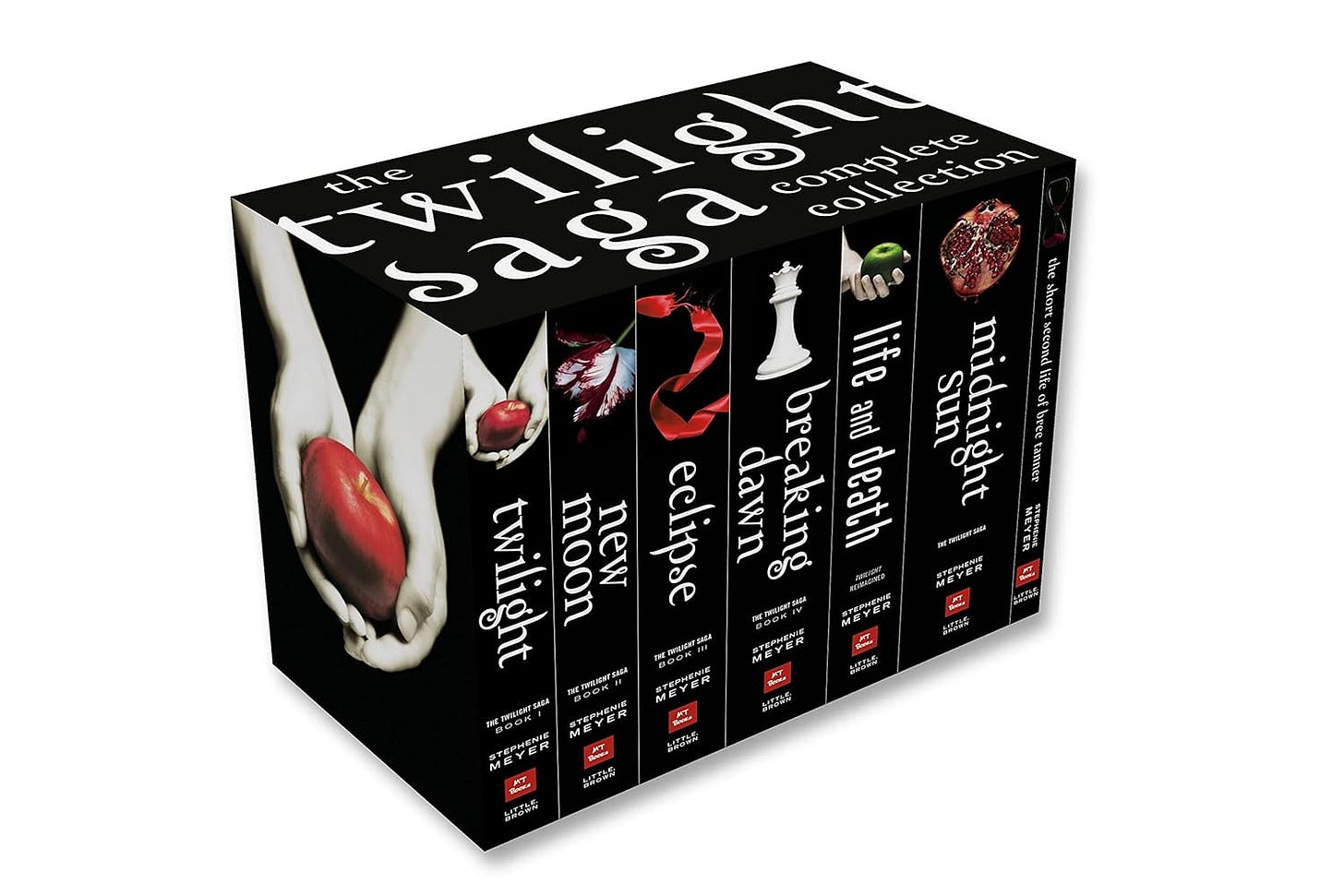Why You Wrote More as a Teenager (and how to get that back)
A reformed perfectionist's guide on how to actually finish writing your book.
As an insatiable pre-teen girl, I remember sitting down at the chunky family computer, opening up a Word document, and writing 100k+ words of stories and fanfiction per month. That’s like writing a Twilight book installment every thirty days (just replace the vampires with Sonic the Hedgehog characters).
When I was a kid, I didn’t think very much before crapping something out. I wrote for fun and giggles and fantasy and to see where the next part of the story would take me. I hardly edited any of my stuff, just sometimes posted it on old reliable fanfiction.net with weekly updates. Weekly.
Adult me could never, with all her responsibilities and criticism and perfectionism taking up space in her brain. These days I’m lucky if I make myself write 30k a month (a small novel length is 50k).
As we ease into November, we arrive at National Novel Writing Month again. This is something I participate in every year, if only to give myself that extra external motivation to get my book out of my brain and onto the page. Ignorance is bliss, but loving a craft enough to want to learn, fail, and try again is how we get better. It may be more difficult to sit down and write when pesky perfectionsim is taking up space in my brain, but that just means I need to be creative about how I get my story down.
So I’ve got some tips to share with you, and hope they help you as much as they’ve helped me!
Get All Your Thoughts On The Page.
Looking at my old drafts, they seem fine. Presentable, even. But as sketches? They suck.
That’s because I can't see my thinking process in them. I have no clue what story I was aiming for. About 90% of my thoughts never made it to the page because I was too focused on “getting it right” the first time.
Now I dump everything onto the page. Every half-formed idea, every "what if," every random thought. I don't waste time making it pretty. I just ask myself, "What are you trying to say?" and write that down.
This isn't the story–it's the blueprint for the story.
And that blueprint is what guides you through your writing.
Write Out of Order.
A painter needs to block out where the big shapes go before they can paint details. A writer might need to decide what two characters want from each other before they can describe the clock ticking on the wall.
When I’d write stories, I used to start with the first word and wrote the rest in order. “And then this happened, and then he said this, and she did that…” I’d put events in their proper, chronological order.
But then I realized: no one would ever see this. I could write the ending first and the beginning last. I could write the action scenes and fill in dialogue later. I could write in bullet points and add details when I had a better visual of the scene. The draft was one long, detailed note to myself.
If drafts are notes to myself, why don’t I write them
in a way that makes sense to me?
No matter where you are in the draft, go write a scene you’re excited about. Writing out of order is totally okay. You’ll have more energy to write a section that you can’t wait to get to. You can rearrange as many scenes or chapters or sections as you want.
If I’m having a good writing day, I’ll keep writing, even if I hit my word count or time limit. I’ll take advantage of those times when my creativity shows up at the same time I do.
Leave off in the middle of a chapter. Stuck? Stop (for now). When you sit down to write again, it’s much easier to ease back into writing. Staring at the blank page is hard but coming back to words you’ve already written isn’t so bad.
Take breaks from writing, but not from the story. If I’m on vacation, on rest, or I’ve hit a complete creative block, I’ll stop writing. But the key thing is to assign myself the mental homework of thinking of my story off the clock. This could be as simple as listening to my story playlist, jotting down any story-related thought or idea or “what-if” that comes into my brain, etc.
Remember How Much You Love This Idea.
In your darkest hour, it’s going to be hard why you started this whole stupid thing. But that’s probably not how you felt when you had the idea in the first place. Remember how excited you were to write? Remember how you got butterflies in your stomach when you thought about your characters, or that one scene you couldn’t get out of your head? Remembering why you started can help push you through your first draft. Here are some things that I love to incorporate into my writing routine to keep my mind fresh with excitement:
Create an Aesthetic Board. Visuals, visuals, visuals! Collect pictures of characters, scenes, and overall mood for your story. Pinterest is great for this. You can also go old-school and cut out pictures from magazines or print them out yourself.
Create Playlists. You can make them for your individual characters, for scenes, for locations, etc. Set the mood with a soundtrack of your story.
Use Sticky Notes. Why are you writing this story? Why this one? Take some time, think about the answer, and put it somewhere you’ll see it.
Don’t Edit As You Go.
*Disclaimer: The point of this advice is to get you out of the rut that prevents you from making progress. If you can tinker for a bit then push on, or if you're still making progress while you polish a little, that’s okay.
I like to talk about how everyone has a different process, and I’ve known writers who feel like they need to edit as they go. “My writing isn’t good enough to move on yet,” is a common response. But when you spend your time polishing a small section before the rest is written, you’re using your meticulous editing muscles on something that hasn’t reached its creative potential yet. Most of the time, you’ll have to go back and scrap or change that section, anyway.
Notes-To-Self.
To draft effectively, you need your own personal "draft language." It's like a secret code between present-you and future-you! This language needs to be quick enough to keep up with your racing thoughts, but clear enough that you won't be scratching your head later. That's why everyone's drafts look different–your draft style needs to match the way your brain works.
Remember That Messy Drafts Are Easier To Revise.
You can treat drafting like you’re a reporter for your own imagination. You’re just documenting what you see, scooping up whatever floats by.
Quick, messy drafting keeps your story fluid. When you enter the revising process later, you’re in a different headspace. You’ll look at all your messy notes and be able to clearly see your sketch, you’ll catch the paths and understand what will work and what you can toss, what you can shape, and what you can move.








